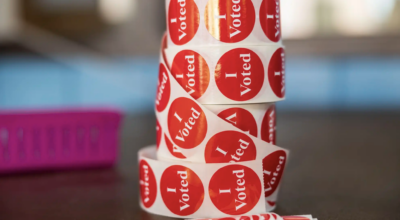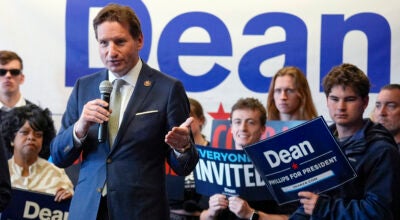Minn. primary turnout lags
Published 10:17 pm Tuesday, August 14, 2012
MINNEAPOLIS — Sen. Amy Klobuchar and Kurt Bills breezed to easy primary victories Tuesday in Minnesota’s U.S. Senate race, setting up a general election contest between the Democratic incumbent and a Republican challenger new to statewide politics.
Klobuchar had only token opposition. Bills, a first-term state representative and high school teacher who carried the GOP’s endorsement, rolled past two rivals.
A pair of House races was much closer.
In northern Minnesota, three Democrats were eager to be their party’s choice to take on U.S. Rep. Chip Cravaack in northeastern Minnesota’s 8th District. At the opposite end of the state, two Republicans sought the nod to challenge Democratic Rep. Tim Walz in southern Minnesota’s 1st District.
In the Democratic contest, former congressman Rick Nolan had about 42 percent of the vote with about 31 percent of precincts reporting. Former state Sen. Tarryl Clark was second at 38 percent, while former Duluth councilman Jeff Anderson had about 20 percent.
In the GOP race, former state Rep. Allen Quist led state Sen. Mike Parry, 54 percent to 46 percent, with about 73 percent of precincts reporting.
In other House races, Reps. Erik Paulsen, Michele Bachmann, John Kline, Keith Ellison and Betty McCollum easily staved off primary challengers. In McCollum’s St. Paul-area district, businessman Tony Hernandez won the GOP primary to take her on.
Secretary of State Mark Ritchie predicted turnout of less than 15 percent of eligible voters, and without the crowds of November, the voting process itself unfolded smoothly statewide.
In the 8th District, Democrats saw a chance to win back a seat they didn’t think they would lose two years ago, when Cravaack upset longtime Rep. Jim Oberstar in what the party sees as its turf. Democrats have criticized Cravaack after his family relocated to New Hampshire.
But, while the three Democrats vying for the seat differ little on policy issues, Clark and Nolan turned up the negativity as their race came down to the wire. Clark ran a TV ad last week that accused Nolan of “blatant misuse of taxpayer dollars” as head of the Minnesota World Trade Center more than two decades ago. Nolan struck back, calling her ad “gutter politics.” Anderson’s campaign hoped to benefit from voters turned off by the attacks.
Nolan, who served in Congress from 1974 to 1981, was looking for a political comeback but also battling perceptions that he was too similar to Oberstar. Clark enjoyed a large fundraising advantage, but also a potential vulnerability in accusations of carpetbagging after she moved to the region not long after she lost to Bachmann in a different congressional district.
Meanwhile, the rural 1st can be swing territory, but Walz is likely to be a formidable candidate come November. Parry and Quist didn’t help themselves by tearing into each other after trading over-the-top comments. The week before the election, Parry was sharply criticized after accusing Gov. Mark Dayton, a Democrat, of popping pills in a meeting.
Quist, who served in the state House in the 1980s, was trying to stage a political comeback after losing the 1994 Republican primary for governor to incumbent Arne Carlson despite winning the party endorsement. The Parry campaign trotted out some of his past controversial statements, including a 1994 interview where he said men had a “genetic predisposition” to lead households.
The House and Senate races weren’t alone on the ballot. Forty-four legislative primary races were under way, including three western suburban Twin Cities districts where Republican incumbents faced conservative challengers. One of those, state Rep. Steve Smith, was an early casualty in the evening, falling to tea party challenger Cindy Pugh.
It’s only the second time Minnesota has held its primary election in August since moving it up from September to give military and overseas voters more time to vote in the general election. But it’s the first since the state redrew its congressional and legislative district boundaries to reflect population shifts.
Also up were two Minnesota Supreme Court races, where the top two vote-getters will advance to the November election.





